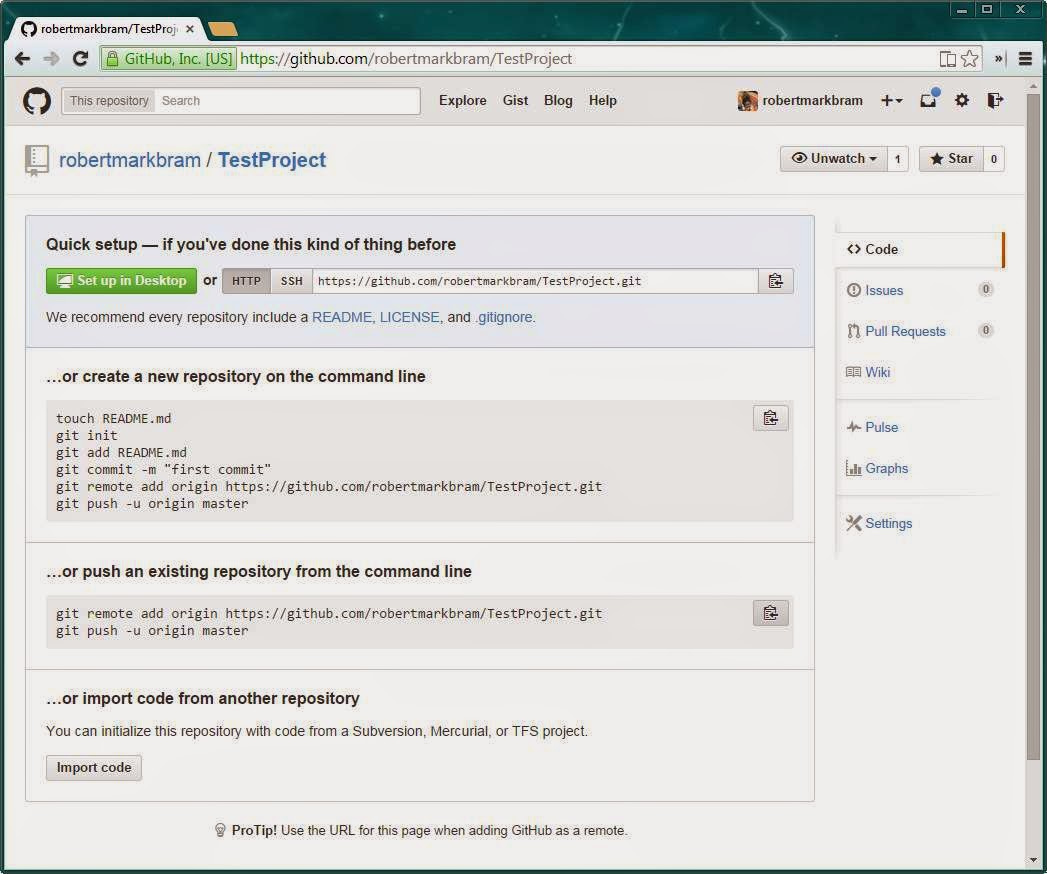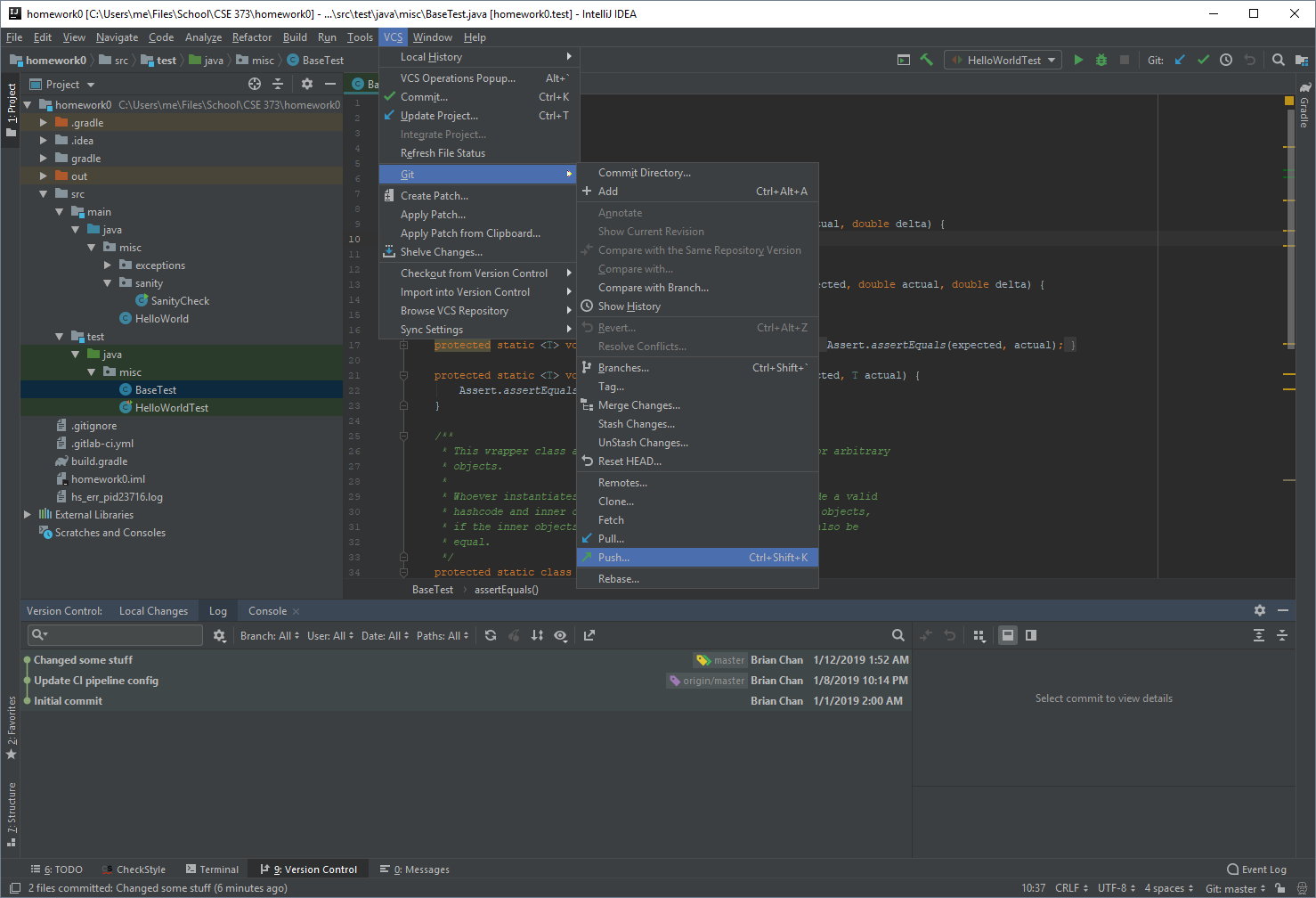
In the Commit tool window Alt+0, expand the Unversioned Files node.

If you are creating multiple Git repositories inside the project structure, repeat the previous steps for each directory.Īfter you have initialized a Git repository for your project, you need to add project files to the repository. Git does not support external paths, so if you choose a directory that is outside your project root, make sure that the folder where the repository is going to be created also contains the project root. In the dialog that opens, specify the directory where a new Git repository will be created. You can choose Always Add to synchronize project settings with other repository users who work with P圜harm.Īssociate different directories within the project with different Git repositoriesįrom the main menu, choose VCS | Create Git Repository. Press Alt+` to open the VCS Operations Popup and select Enable Version Control Integration.Īlternatively, from the main menu, select VCS | Enable Version Control Integration.Ĭhoose Git as the version control system and click OK.Īfter VCS integration is enabled, P圜harm will ask you whether you want to share project settings files via VCS. Open the project that you want to put under Git. Associate the entire project with a single Git repository You can create a local Git repository based on the existing project sources. Put an existing project under Git version control If your project contains submodules, they will also be cloned and automatically registered as project roots. Git root mapping will be automatically set to the project root directory. If you want to create a project based on the sources you have cloned, click Yes in the confirmation dialog. If you are already logged in to the selected hosting service, completion will suggest the list of available repositories that you can clone.Ĭlick Clone. In the Get from Version Control dialog, specify the URL of the remote repository you want to clone, or select one of the VCS hosting services on the left. P圜harm allows you to check out (in Git terms clone) an existing repository and create a new project based on the data you've downloaded.įrom the main menu, select Git | Clone, or, if no project is currently opened, click Get from VCS on the Welcome screen. Check out a project from a remote host (clone) If you need to manually configure P圜harm to use Git from WSL, go to the Version Control | Git page of the IDE settings Ctrl+Alt+S, click the Browse icon in the Path to Git executable field and select Git from WSL via the \wsl$ path, for example, \\wsl$\debian\usr\bin\git. Also, P圜harm automatically switches to Git from WSL for projects that are opened when you use the \\wsl$ path. If Git is not installed on Windows, P圜harm searches for Git in WSL and uses it from there.
Git add remote repository from local windows 10#
P圜harm supports Git from the Windows Subsystem for Linux 2 (WSL2), which is available in Windows 10 version 2004. If the IDE can't locate a Git executable, it suggests downloading it. Any changes you make locally can now be easily pushed to your remote repository.When you clone an existing Git repository, or put an existing project under Git version control, P圜harm automatically detects if Git is installed on your computer. You've now successfully created your local folder into a Git folder and configured the remote repository. You can do this using the following command. Within this stage you also need to configure the branch you are using and the name of it. The next step is to push a copy of the files from your local repository to your remote repository. This is the one you created earlier on at the start of this process.

Your next step is to configure it so that your local folder/repository knows where the remote repository is. The next step is to record the changes to your repository. You now need to add the files you've created into the "staging" area to get ready to push them to your repository source. git and is usually the first command you run on an empty or non-empty folder to covert to a Git repository. This command will create a folder called. Navigate to the location of the folder and type in the command: git init The next step is to convert the folder, to do this open up a command prompt or Terminal shell (I'm using Windows Terminal). With my new repository create I take a note of the URL, as you'll need it in a few steps. 😊 Create a new repositoryĬreate your repository source, in my example I am creating a new GitHub repository. There are a few processes to carry out in order to make it happen. So I had to convert a non-empty folder into a Git repository. I recently created a folder and started working on a Azure ARM Template that I then wanted to push into a GitHub repository so I could share it with others.


 0 kommentar(er)
0 kommentar(er)
